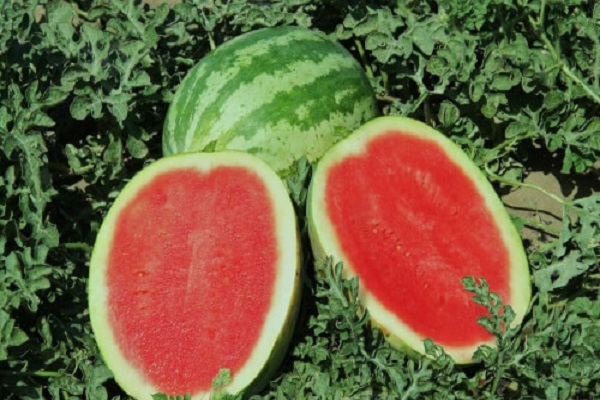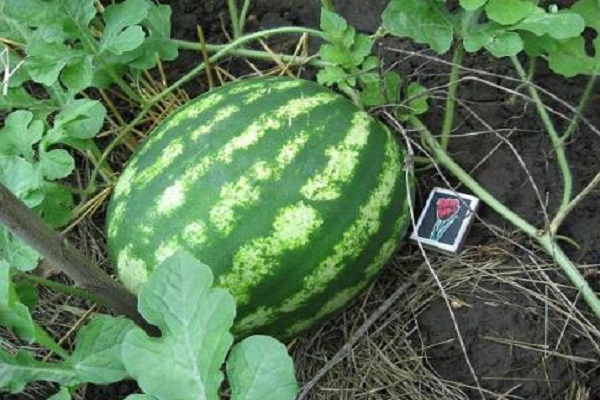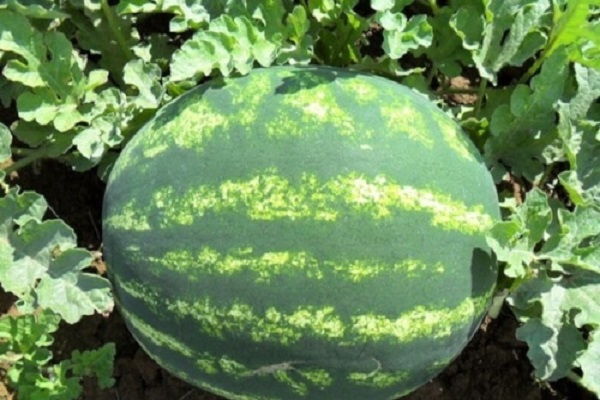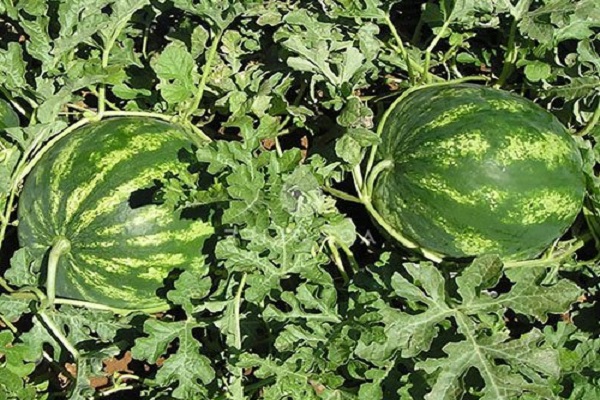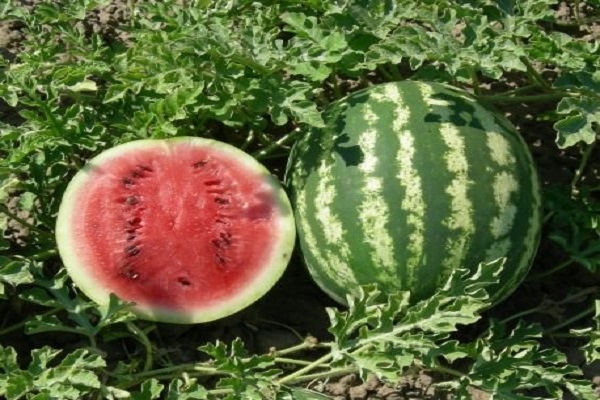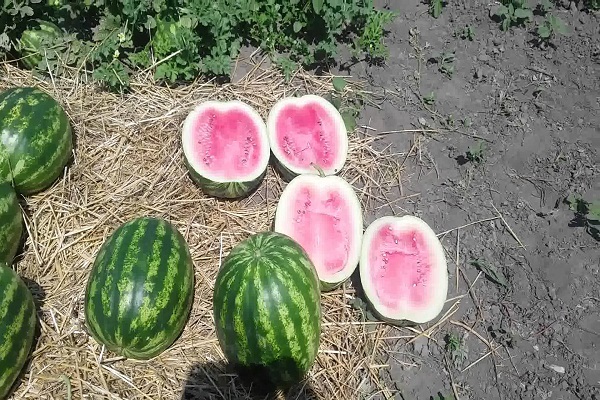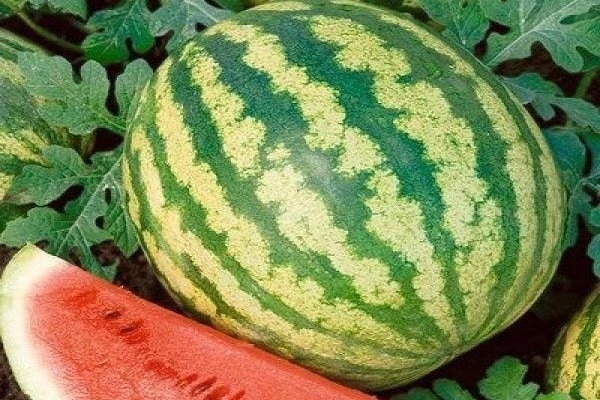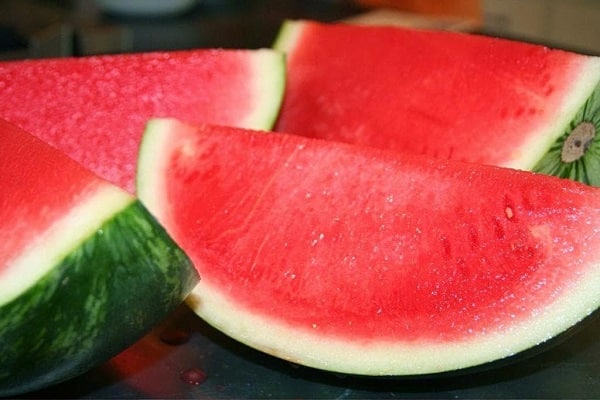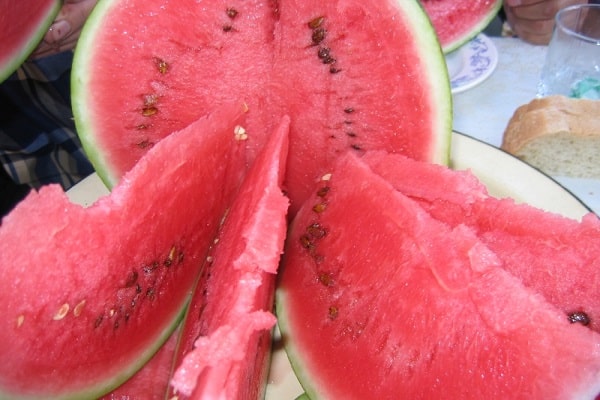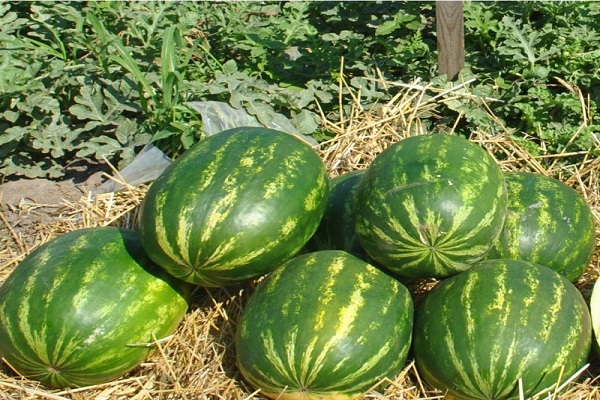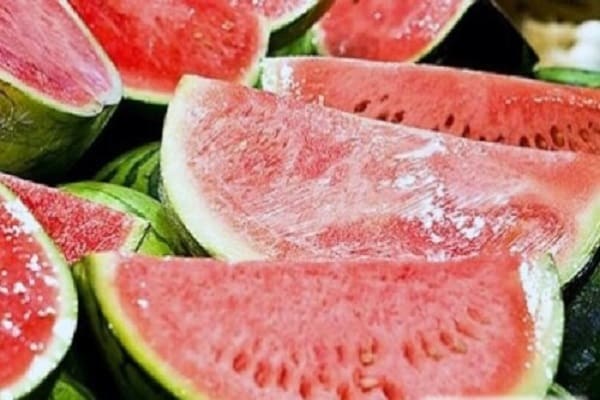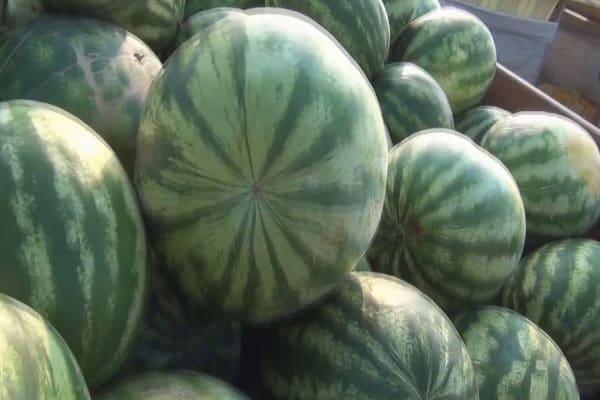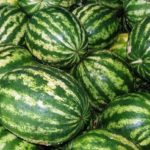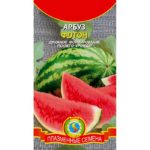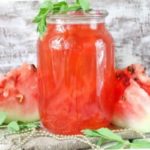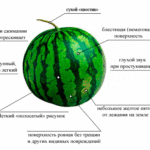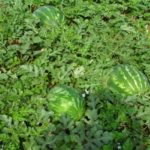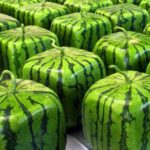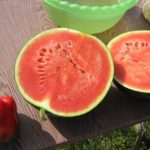The Crimson Sweet watermelon variety is one of the most common early varieties in Europe, thanks to its sugary, juicy berries. The name characterizes the taste, since the word “sweet” is translated from English as sweetness. To grow a large and high-quality fruit, you need to carefully study the recommendations for growing it in a greenhouse and in open ground, as well as tips for creating optimal conditions for good germination.
Origin and description
For the first time, the Crimson Sweet watermelon was created in France during long breeding work by experienced specialists. Now it is actively grown for production purposes in many European countries. The variety is unpretentious to the soil and feels great in any region, only if the growing area is characterized by cold climatic conditions, it is worth growing the berry in a greenhouse.
The fruit weighing 5-12 kg has an oval, rarely round shape. It has a bright, smooth skin, with well-defined light stripes. The juicy flesh of a bright red hue is distinguished by the complete absence of transverse veins. The main advantages of the Crimson Sweet watermelon include:
- resistance to weather changes, growth rate even without regular watering;
- the ability to withstand long-term transportation while keeping the dense shell intact;
- high sugar content in the pulp, which advantageously represents the variety on the market;
- excellent yields and impressive weight;
- resistance to characteristic diseases.
Disadvantages include intolerance to rainy weather and large amounts of nitrogen in the soil.
Optimal conditions for good growth and yield
Before growing Crimson Sweets watermelon, you need to study and create optimal conditions for its intensive growth. Only by diligently caring for the plant can you achieve success in obtaining a harvest.
Feeding
During the entire period of growth watermelon needs to be fertilized only 2 times: before planting and during the formation of the ovary. Before planting, the soil must be fertilized in advance with phosphorus-potassium minerals in the fall.Nitrogen-based chemicals can also be used for feeding, but they can negatively affect the taste of the fruit.
Seedlings that are in the phase of two true leaves are usually sprayed with a solution of Atlet (1 ampoule per 2 liters of water). After this, the plant will become more resistant to diseases and drying out of the root system.
Watering
The plant needs abundant watering, since the lack of the required amount of moisture can weaken the root system and the likelihood of the plant wilting. But water the watermelon not recommended after fruit formation begins. This can negatively affect the quality of the fruits, as they will lose their honey taste and become watery.
Formation
When growing watermelon of the Crimson Sweet variety, timely and correct removal of stepsons is of great importance. You need to start the shaping process when the fruit has already become the size of an apple. You should get rid of excess melons without berries. Make a cut on the fruiting branches, leaving 5 leaves behind.
Features of growing the Crimson Sweet variety
The taste and appearance of the Crimson Sweet watermelon variety are influenced by the climatic conditions of the place of growth, the naturalness of the applied fertilizers, proper watering and many other factors. Planting plays an important role in growing watermelon. It affects the further development of the entire plant and the formation of fruits. Therefore, in order to end up with appetizing large berries, you need to pay due attention to it.
In greenhouse conditions
Before planting, it is necessary to organize the correct greenhouse, install it in the optimal zone, provide good lighting, and additional heating. Growing Crimson Sweet watermelon in greenhouse conditions involves familiarizing yourself with the sequence of actions:
- Fertilize the soil with organic and inorganic substances and thoroughly loosen it a week before planting so that it has time to soak. It is recommended to use compost and ash as fertilizer.
- Dig beds 1 m apart in length and as wide as the greenhouse parameters allow.
- Fill with warm rainwater and plant 2-3 seeds in the hole at a distance of 5 cm from each other.
- Cover the marked areas where the seeds were added with the neck of a cut-off plastic bottle.
After the first shoots appear, get rid of the protective bottles and maintain normal humidity and temperature parameters.
Outdoors
It is recommended to plant seeds for seedlings at the end of April according to a certain pattern:
- Fill small pots with loose, airy soil.
- Place the seed in moist soil to a depth of 1 cm.
- Create the proper conditions for intensive growth of the first shoots: temperature at least 25 degrees, constant soil moisture.
- After the sprouts appear, gradually reduce the temperature to 10 degrees and expose the pots to fresh air for up to 4 hours.
- Plant in open ground a month after the first shoots appear.
It is important to pay attention to whether the soil has warmed up well. If the temperature is below 15 degrees, planting should be postponed due to the likelihood of the root system freezing.
Sensitivity to nitrates and methods of controlling diseases and pests
You should not resort to chemical-based mineral fertilizers. They can negatively affect both the taste and appearance of the fetus and the human body.More often, chemicals are used only for advanced disease or to get rid of pests.
Dangerous pests for this variety are melon aphids and spider mites. They feed on the sap of the leaves, which leads to complete dehydration of the plant and rapid wilting. For prevention purposes, use onion or garlic solution, but after detection, carry out 3 spraying procedures with Apollo or Neoron with a break of 10 days. Do not forget about their toxicity and use a protective suit.
Basic watermelon diseases Crimson Sweet is white, black or root rot, powdery mildew and anthracnose. Rot forms in conditions of high humidity and requires immediate chemical intervention. For anthracnose, treat with Bordeaux solution and weed the soil.
Powdery mildew is the most dangerous disease, which requires complete removal of the plant and burning. Treat the soil with Karatan.
Hybrid varieties
Breeders do not sit still and have recently created many hybrids of this variety, improving it according to various criteria. Now gardeners have more diverse options for choosing an improved favorite watermelon.
Crimson Ruby
The variety, bred by the French company Clause Tezier, is popular in all European countries due to its ability to grow in any soil and resistance to sudden temperature changes, but growth slows down below 20 degrees. It is grown both for production purposes and in home gardens, due to its excellent taste and high commercial ratings. The sugar content exceeds 10%, and the weight of the berries, depending on climatic conditions, can be 8-10 kg.
Crimson Wonder
Mid-early hybrid with high yield. It is frost-resistant, resistant to many diseases and virtually eliminates the appearance of pests. Watermelon tolerates transportation well and can be stored for a long time at home. The berry quickly forms, is actively saturated with juice and gains weight of about 13 kg. It does not tolerate moisture well and in rainy weather requires additional protection in the form of a special coating.
Crimson Ruby F1
The hybrid is characterized by increased productivity and excellent taste. It was recently included in the State Register in the North Caucasus region. It is resistant to common pests and diseases. The berry is strong, oval in shape and weighs 10 kg. The sugar content exceeds 6%. Pulp with pronounced brightness and incomparable aroma.
Watermelon Crimson Sweet has changed the understanding of many amateur gardeners about melons. The plant does not require diligent care and expensive fertilizers. Already in August, you can enjoy the excellent sweet taste of berries without the presence of harmful nitrates and fertilizers that negatively affect human health.

